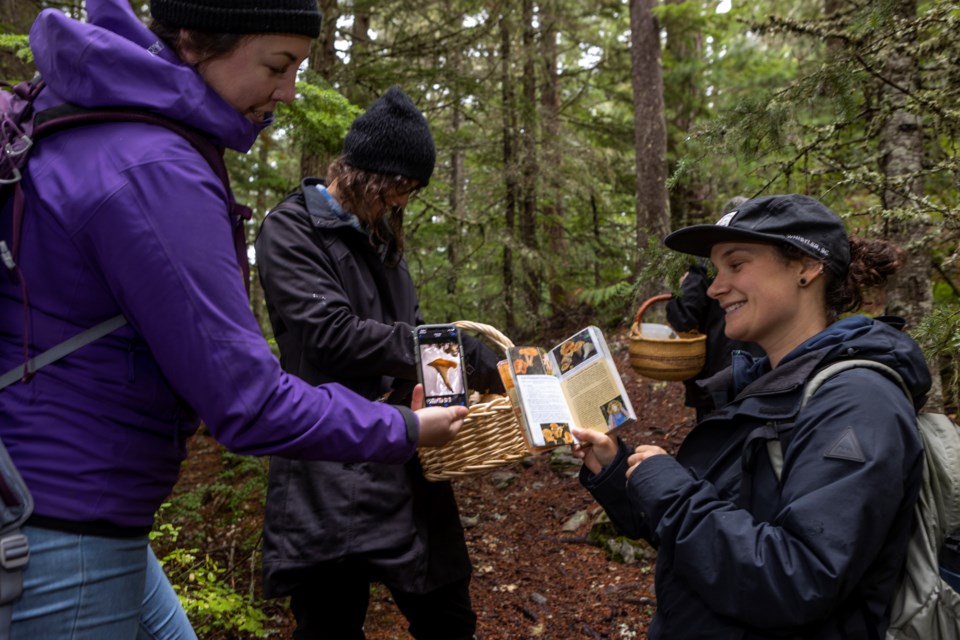In the autumn it’s always interesting to see the wide variety of mushrooms popping up. So it’s no surprise that this is when we celebrate them with Fungus Among Us—now in its 19th year. But what are fungi doing the rest of the year?
First a quick review: Mushrooms are to a fungus what apples are to an apple tree: a fruiting body, whose purpose is to produce and release tiny seeds—spores—to reproduce. Continuing with the analogy, an apple is quite small compared to the tree we might see it on, and it’s the same with mushrooms and the large fungal body they grow on, which is underground and out of sight.
About half of the fungi in Whistler are in symbiotic (mutually beneficial) relationships with plants and these are the ones I’m continually fascinated with. Such fungi are called mycorrhizal, which means “fungus root.” Amazingly, in just a teaspoon of healthy soil there can be kilometres of fungus roots known as mycelium. They associate with the small feeder roots of plants and help absorb water and nutrients more efficiently. In exchange, the plants provide fungi with carbon-based food they produce through photosynthesis.
Recent studies of mycorrhizal fungi found that not only do these transport food from trees between themselves, fungus to fungus, but they can also connect trees together. Scientists like Suzanne Simard from the University of British Columbia have found that the largest, oldest trees are often hubs for this massive network, which has cleverly been called the Wood Wide Web.
In the World Wide Web it’s analogous to, however, things work a bit differently. Whether you’re on a PC or Mac we can all still communicate with each other over the internet, yet underground there are two major types of mycorrhizal fungi that form webs entirely separate from one another.
The first type, endomycorrhizal (endo = inside), grow inside plant root cells and form symbiotic relationships with about 85 per cent of plant families. The second, ectomycorrhiza (ecto = outside), grow on the outside of root cells and are symbiotic with about 10 per cent of plant families.
What does this mean for our forests? Since most trees associate with ectomycorrhizal fungi, in Whistler it means that Douglas-fir, spruce, true firs, pines and hemlocks can all talk to each other underground. Interestingly, red cedar and yew are on a separate network since they associate with endomycorrhizal fungi. As with all things in nature, I’m sure studies will show that this isn’t a disadvantage and that everything balances out in the end (as long as humans don’t interfere).
There are literally thousands of ectomycorrhizal species worldwide including chanterelles and truffles. Conversely, there are only a couple hundred endomycorrhizal species because these tend to be generalists, meaning that even though they are few in number they can link a lot of different plants on their network.
We wouldn’t have our forests without mycorrhizal fungi. The trees and fungi are in a delicate balance; when one is healthy, so is the other. That’s why mushroom hunting is best in old growth forests where this balance—decades or hundreds of years in the making—hasn’t been damaged or destroyed.
Learn more at Fungus Among Us this weekend. Virtual ‘Talks with Gurus’ start Friday at 7:00 p.m. and the ‘Mushroom Display’ Saturday at 2:30 p.m. ‘Walk with Gurus’ Saturday morning is sold out. Naturespeak is prepared by the Whistler Naturalists. To learn more about Whistler’s natural world, go to whistlernaturalists.ca.




